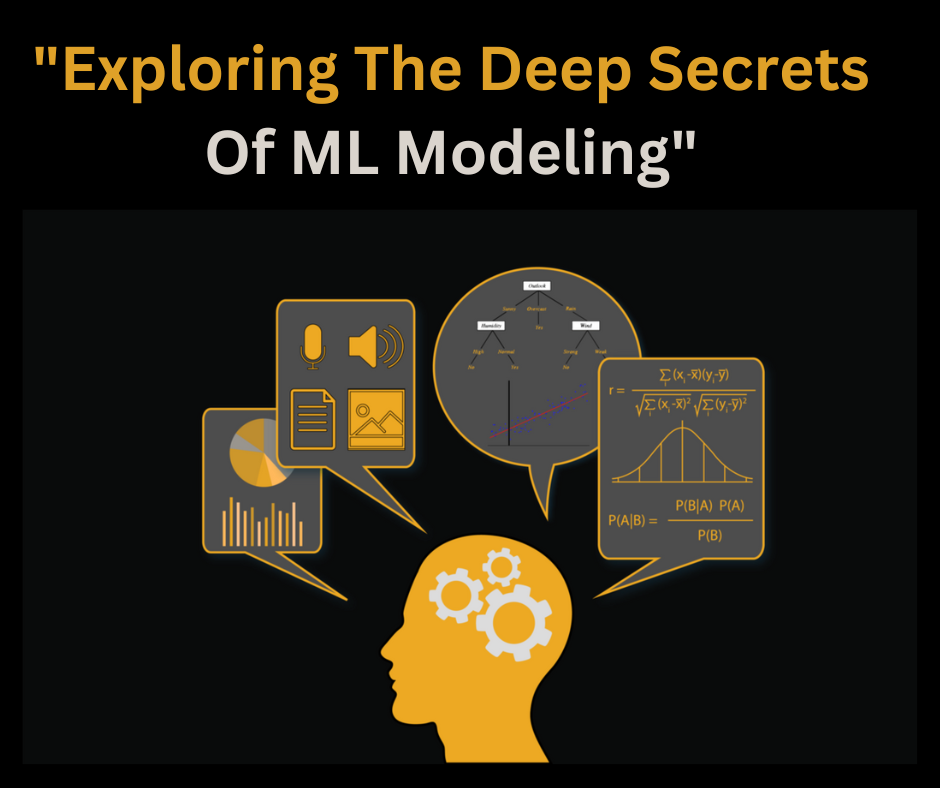Learn the basics of machien learning model with this blog post, including data preprocessing, feature engineering, and model tuning.
“Exploring The Deep Secrets Of ML Modeling”
Machine learning (ML) is a powerful tool that can be used to improve the accuracy of predictions made by a computer system. However, to get the most out of ML modeling, you need to understand the basics of how it works.
That’s why, in this blog post, we’re going to explore the deep secrets of ML modeling. We’ll start by discussing data preprocessing, which is essential for accurate ML modeling.
We’ll then move on to feature engineering, which is where you create the features that will be used to train the ML models. After that, we’ll talk about model tuning, which is essential for ensuring that the ML models are accurate. By the end of this post, you should have a better understanding of the basics of ML modeling and how it works.
Data Preprocessing
Data preprocessing is the process of cleaning and preparing your data for modeling. It can include things like removing outliers, filling in missing values, and normalizing the data. By doing this, you make sure that your data is ready to be used in your model and that it can be analyzed accurately.
Gain the expertise of the Master Data Scientist with the Analyticas Path Machine learning Course in Hyderabad.
Feature engineering is the process of designing the features of your model. This includes things like choosing the right type of predictor, determining how many features to use, and deciding which features to include in your model. Feature engineering is important because it determines how well your model will perform on data that doesn’t fit neatly into a predefined format.
Model selection is the process of selecting which models to use in a prediction problem. This includes things like determining which models are best suited for the type of data you’re working with, choosing between multiple models based on their performance, and choosing a model that meets specific requirements (such as being robust).
Hyperparameter optimization is the process of tweaking parameters in a machine learning model until it performs best on test data. This can include things like optimizing different aspects of a machine learning algorithm such as accuracy or speed. Hyperparameter optimization is important because it allows you to fine-tune your machine learning model to fit specific needs or problems.
Cross-validation is an automated technique for ensuring that your models are accurate by testing them against different sets of training data multiple times. This helps to prevent bias from creeping into your predictions by allowing you to see how well each model performs on different types or sets of data. Finally, deployment means putting your machine learning models into action – using them to make predictions or decisions about real-world problems.
Feature Engineering
Feature engineering is an essential part of the machine learning process. It’s the process of using domain knowledge of the data to create features that make machine learning algorithms work. By understanding and utilizing this knowledge, you can improve the performance of your models dramatically. In this blog, we’ll take a look at some of the key steps in feature engineering and discuss why they’re so important.
The Machine learning Training in Hyderabad course offered by saintt de Analytics Path will be practical for showing your expertise as a professional in this field.
First, let’s take a look at how data preprocessing can help in feature engineering. This step involves cleaning up the data so that it’s ready for machine learning. common techniques include removing incorrect values, transforming data into a more suitable format, and removing outliers. By doing this, you can make sure that your data is ready to be used in machine learning algorithms and that your models will be accurate and reliable.
Next, it’s important to identify which features are relevant for your problem domain. This task often requires a lot of trial and error as you try different combinations of features to see what works best for your dataset.
However, by taking advantage of domain knowledge, you can speed up this process significantly.
For example, if you know that sales records typically include information about product SKUs and prices, you could use these features to train a model prediction algorithm instead of having to manually search through all the records each time you want to make a prediction.
Finally, it’s important to train and validate your model using proper hyperparameter tuning techniques.
This step is crucial as it helps ensure that your model is accurate and reliable before deploying it into production settings. By fine-tuning these settings until they’re just right for your dataset, you can minimize potential errors or failures down the road.
Model Tuning
There’s a lot of talk these days about ML. But what is it, really? And how can you use it to improve your business? In this section, we’re going to explore the basics of machine learning – from its history to its future. We’ll also look at the process of model tuning – what it is and what benefits it offers. Finally, we’ll discuss when to tune your models and how to do it most effectively.
By the end of this blog post, you will have a better understanding of ML and its potential benefits for your business. So let’s get started!
In Short
If you have an interest in data-analytics, this Tricky logics will be usable for you.
This blog has covered the basics of data preprocessing, feature engineering, and model tuning. By following these steps, you can improve the accuracy of your machine learning models. However, keep in mind that there is no one-size-fits-all solution; you will need to experiment to find the best approach for your data.








